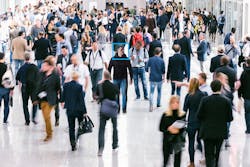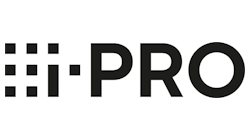Facial Recognition: Old Myths, New Markets
This article originally appeared in the March 2020 issue of Security Business magazine. When sharing, don’t forget to mention @SecBusinessMag!
Over the past few years, a significant number of people in the United States and around the world have become apprehensive about the prospect of facial recognition technology.
Myths about the technology and its use have pervaded society: It will track us all wherever we went and predict our daily routines; it will make us vulnerable to mistreatment and intrusion by the government; it will leave us vulnerable to private organizations for commercial purposes. While these fears are unfounded when it comes to the technology’s use for security, the misconceptions have continued to spread as facial recognition technology has gained traction and found more real-life applications.
By 2010, as image databases began to grow more quickly through the advent of social media and image sharing, further concerns began to circulate about shortfalls in accuracy depending on a person’s ethnicity, and the possibility of unjust accusations based on racial profiling.
While facial recognition has become a hot-button topic for privacy advocates, there is no doubting that the technology has exceptional application potential – so much so that it will, without question, continue to proliferate. As the technology evolves to become more accurate, some of the general public’s concerns will fade away; and as applications continue to grow well beyond law enforcement, facial recognition will gain even more traction in multiple vertical markets.
However, for security integrators to take advantage of more widespread adoption, they must allay the common fears and misconceptions when it comes to deploying the technology in a security/safety environment.
Debunking the Myths
The reality of facial recognition is very different from the myths; in fact, the level of accuracy has improved enormously in the last 10 years, according to an evaluation performed by the National Institute of Standards and Technology (NIST). The failure rate for searches – meaning that the software failed to find the matching face residing within a database – has dropped from 5% in 2010 to just 0.2% in 2018 – a reduction of 96%.
While the capability of tracking every individual is theoretically not beyond the power of the software, the cost and bandwidth it would take to do so vastly outweighs any benefits that might exist. The government almost certainly does not want to watch all of us go to the gym, the coffeeshop and the grocery store, rest assured.
Many different industries are beginning to discover specific applications that are relevant to their pain points, and facial recognition is being introduced as a potential solution. The primary use for the technology remains as a solution for law enforcement and other institutions to keep unauthorized or dangerous visitors off-premises.
The Law Enforcement Connection
There is a wide network of facial image databases available to and via the FBI and local law enforcement agencies – including mugshots, the State Department’s entire directory of visa and passport pictures, and photos from Departments of Motor Vehicles in at least 22 states. As of October 2020, Americans in 47 states will be required to show either a passport or a new federally compliant Real ID driver’s license to board any domestic flight.
For non-government users of the technology, databases could include opt-in customers who have provided their photos for a variety of reasons, including security checkpoints, ID access bracelets, VIP club memberships, etc. All of these databases may also be used to determine the identify of an individual caught on surveillance video who is suspected of a civil or criminal infraction.
Because there are so many image databases available, it is imperative for law enforcement to have absolute certainty when surveillance video of a crime is being matched up in an attempt to identify a perpetrator caught on camera. With the fast-growing advent of deepfakes making it possible to alter video, the chain of custody for evidence must be 100% verifiable.
Vertical Markets: Facial Recognition for Business
Beyond the applications for law enforcement, which could be controversial for some observers, there is a wide range of industries and organizations using the technology for security, business intelligence and growth.
Retail: With the growth of e-commerce, retail establishments need to step up their game and create better in-store customer experiences in order to maintain traffic and sales. One way they can do this is by using facial recognition to reduce or eliminate checkout lines. Enrolled customers can simply show their face to the camera to make payment instantly. Stores can also use the technology to identify frequent customers as they enter the store, prompting a sales associate to greet them by name. On the security side, facial recognition is already being used to detect known shoplifters as they enter a store, which can deliver immediate and powerful ROI by preventing theft and crime.
Airports: Facial recognition can speed up the check-in and boarding process for passengers.
Education: As in many markets, facial recognition can benefit schools with both security and non-security applications. The technology can be used to detect when anyone on a school’s watch list – including sex offenders, non-custodial parents, expelled students and teachers who have been fired – enters school grounds. With an alert to school guards or administration, this can reduce the risk of on-site violence. Beyond security, facial recognition can be used to track attendance for students. This form of record keeping is more accurate than sign-in sheets and cannot be falsified by a student’s friend covering for their buddies skipping classes.
Gaming: Casinos can greatly benefit from the ability to discover the instant a known cheater enters the premises. They can also benefit from facial recognition in identifying high rollers, so they can receive VIP treatment the moment they arrive. In addition, casinos can create watchlists of individuals who have enrolled in self-exclusion programs in order to deal with their gambling problems, helping to protect gaming establishments from fines for permitting these people to gamble.
Stadiums: Many event venues have begun to monetize the concept of creating VIP experiences for attendees willing to pay a higher ticket fee. Facial recognition can improve that experience by recognizing these individuals as they enter the venue, alerting employees to greet them by name, deliver their favorite snacks and beverages etc. On the other end, it can prevent access to known hooligans or overly-passionate fans who have caused trouble in the past.
Banking: Its accuracy makes facial recognition an ideal tool for identity verification in financial applications. The technology can replace a card scan at ATMs, helping to reduce fraud and skimming. There is even the potential to use it for ID validation for smartphone banking transactions, a fast-growing application for finance.
Healthcare: Early diagnosis by selfie is not science fiction – researchers with the National Human Genome Research Institute have successfully used facial recognition software to diagnose DiGeorge syndrome, a rare genetic disease. This early diagnosis can help healthcare providers deliver critical early interventions and improve their overall level of care. The same team of researchers is continuing to study diseases and other disorders to find additional opportunities for diagnosis via facial recognition.
Bill Brennan is VP of the Panasonic i-PRO Sensing Solutions (PIPSA) Security Division. Request more info about the company at www.securityinfowatch.com/10214586.




